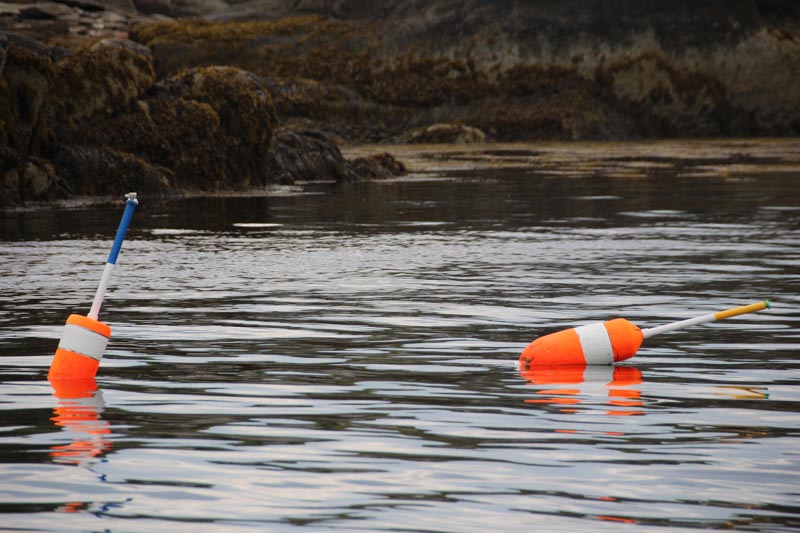About Lobstering
Commonly asked questions about lobstering.
What type of paint is used?
Most of the non-fluorescent paint is either a marine enamel, liquid PVC (plastic), or exterior latex.
The fluorescent colors are a marine alkyd enamel, and sometimes coated with a UV protectant to prevent fading.
Can I hang these buoys outdoors?
I sure hope so! They're made to last several years in the ocean, so hanging outdoors is no issue. I have many that date back to the mid-seventies that are still hanging on my barn.
Can people still use wooden buoys?
No, it is illegal to fish with wooden buoys. One of the big problems with them is that they sit very low in the water, making them difficult to see (and cause a lot of damage to boats when hit).
What is a toggle?
The tides in Maine range from eight to twelve feet, which means at low tide, there can be a lot of rope on the bottom, just waiting to get stuck between rocks. A toggle is a small float that is tied about 5 fathoms up from the trap, which is designed to keep the rope clear of rocks during low tide.
Do people lobster year round?
Some do, while others decide not to brave the elements in the winter. For people who lobster the entire year, the traps must be pulled out and dried for one month during the year.
What is the difference between a soft shell lobster and a hard shell lobster?
When lobsters grow, they shed their shell to make room for a bigger one. The new shell takes time to harden, and before it does is incredibly soft and brittle. So much that many boats have a separate holding take for these lobsters as they would otherwise be crushed. During molting season, the lobsters come close to shore.
So close, in fact, that at low tide, you sometimes see the lobster traps right out of the water!
I see many different styles of lobster buoys. Does it mean anything?
When running multiple lobster traps on a single line (called a string), you stand the chance of laying your string of lobster traps over another string already in the water.
To help prevent this, a different style of lobster buoy is used on each end and the lobstermen try and run the string of lobster traps in the same direction. For example, the south
end of the string may use a lobster buoy with the nose pointed down, while the north end may use a double-stacked buoy. This also prevents trap loss because if one end is cut,
there still is a lobster buoy on the other end of the string.

The above photo shows an example of the different types of lobster buoys to mark each end of a string.